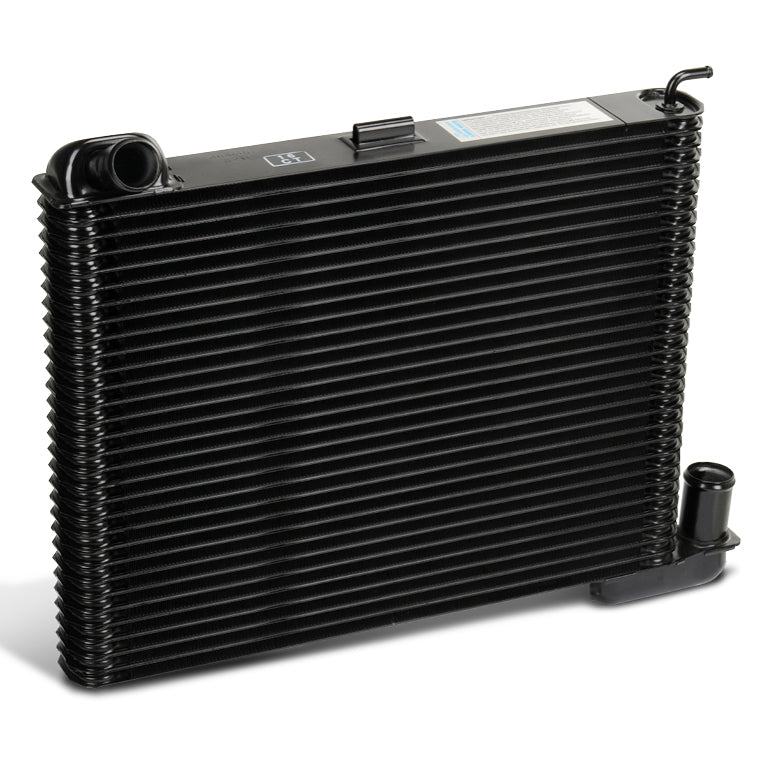I would like to get a handle on cooling issues with my 1968 convertible.
During normal operation, the temp gauge is typically just to the right of the mark between the 100 and 250 marks. If it is a cool day, it may be just to the left of the mark. Under the very worst conditions, (extremely hot Los Angeles day, stop and go traffic, etc.) it will approach, but stay to the left of the 250 mark. Admittedly I have not checked the thermostat status.
When I stop and park it on a hot day, the overflow tank spews out some coolant.
The engine is not original, a 350, and I'm told an "010" block which is (again I'm told) a replacement block popular in the '80s. Carburetion (Quadrajet) and heads are from other years so it is a bit of a Frankenstein. It was recently tuned by a competent professional, so I assume timing and air/fuel ratio is OK.
I have little on the previous history of the car. The build date is July 26, 1968.
Please see the attached photos. There are cutouts in the body below the bumpers, which again I've been told, are part of the updates from GM to deal with cooling issues. True?
It looks to me like the fan blades are outside of the fan shroud which might limit their effectiveness? I recall a restoration TV program where they extended the fan shroud to cover the fan blades to deal with overheating on a 1968, although the car was a big block.
The cap on the expansion tank was replaced with a better quality unit rated at 15#, no difference.
Another issue: How do I add coolant? Again, there is much on this car that is not correct. The only opening is the expansion tank. But I don't see how that would fill the radiator engine. Should I expect the engine to fill itself from the tank somehow? Or should I force coolant in via disconnecting the upper radiator hose? If I squeeze the upper radiator hose (which feels empty) I can somehow suck some coolant in from the expansion tank. I am using a 50/50 Prestone / water mix.
Is water wetter recommended?
I'll be taking it to the NCRS convention in Las Vegas and would like to have the coolant spewing under control.
Any recommendations?
~paul
During normal operation, the temp gauge is typically just to the right of the mark between the 100 and 250 marks. If it is a cool day, it may be just to the left of the mark. Under the very worst conditions, (extremely hot Los Angeles day, stop and go traffic, etc.) it will approach, but stay to the left of the 250 mark. Admittedly I have not checked the thermostat status.
When I stop and park it on a hot day, the overflow tank spews out some coolant.
The engine is not original, a 350, and I'm told an "010" block which is (again I'm told) a replacement block popular in the '80s. Carburetion (Quadrajet) and heads are from other years so it is a bit of a Frankenstein. It was recently tuned by a competent professional, so I assume timing and air/fuel ratio is OK.
I have little on the previous history of the car. The build date is July 26, 1968.
Please see the attached photos. There are cutouts in the body below the bumpers, which again I've been told, are part of the updates from GM to deal with cooling issues. True?
It looks to me like the fan blades are outside of the fan shroud which might limit their effectiveness? I recall a restoration TV program where they extended the fan shroud to cover the fan blades to deal with overheating on a 1968, although the car was a big block.
The cap on the expansion tank was replaced with a better quality unit rated at 15#, no difference.
Another issue: How do I add coolant? Again, there is much on this car that is not correct. The only opening is the expansion tank. But I don't see how that would fill the radiator engine. Should I expect the engine to fill itself from the tank somehow? Or should I force coolant in via disconnecting the upper radiator hose? If I squeeze the upper radiator hose (which feels empty) I can somehow suck some coolant in from the expansion tank. I am using a 50/50 Prestone / water mix.
Is water wetter recommended?
I'll be taking it to the NCRS convention in Las Vegas and would like to have the coolant spewing under control.
Any recommendations?
~paul

Comment